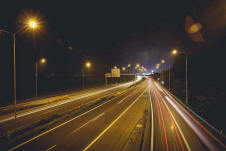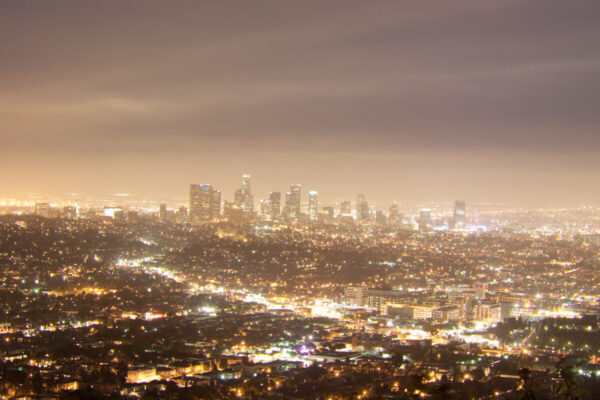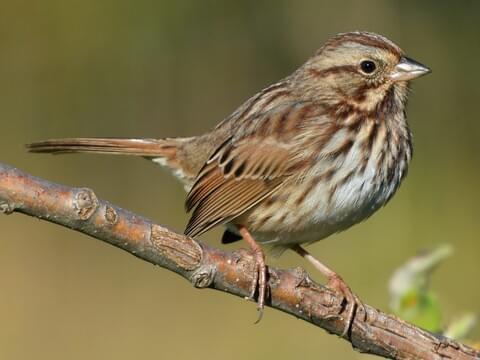June 11, 2025

By: AEOP Membership Council Member Stephen Lin
Newly hatched sea turtles race towards a brightly lit city skyline instead of the ocean. A nocturnal cat creeps up to its prey- only for a garage light to click on. Birds wake up in the middle of the night, mistaking it for morning. Across America, artificial light pollution is increasingly disrupting natural environments, altering animal behavior, and harming ecosystems.
My own STEM journey intersects with this growing environmental challenge. Last year, as part of my school’s Integrated Biology, English, Statistics, and Technology (IBEST) program, I worked with peers to study the effects of artificial light at night on local bird species. Our research showed that teen-led science can contribute to community solutions and address large-scale environmental challenges like light pollution.
 Human light pollution is a growing problem. In recent years, light from residential buildings and industrial infrastructure has increased significantly in urban centers adjacent to natural ecosystems. This artificial light pollution disrupts species that have evolved to depend on natural light patterns. Take migratory birds like Canadian geese, which use changes in daylight to determine the seasons. Geese must interpret seasonal cues to appropriately migrate to regions with more resources. However, when artificial light mimics natural light, migratory birds can mistake the increased light presence and get trapped in urban centers, which may pose risks to species not adapted to city life. Other impacts of light pollution include changed circadian rhythms, and different nocturnal behaviors. Clearly, light pollution can have a great impact on various species and the environment. It is important to understand the impacts that light pollution has in specific communities to protect both wildlife and ecosystems.
Human light pollution is a growing problem. In recent years, light from residential buildings and industrial infrastructure has increased significantly in urban centers adjacent to natural ecosystems. This artificial light pollution disrupts species that have evolved to depend on natural light patterns. Take migratory birds like Canadian geese, which use changes in daylight to determine the seasons. Geese must interpret seasonal cues to appropriately migrate to regions with more resources. However, when artificial light mimics natural light, migratory birds can mistake the increased light presence and get trapped in urban centers, which may pose risks to species not adapted to city life. Other impacts of light pollution include changed circadian rhythms, and different nocturnal behaviors. Clearly, light pollution can have a great impact on various species and the environment. It is important to understand the impacts that light pollution has in specific communities to protect both wildlife and ecosystems.
One community affected by light pollution is Tysons Corner, near Washington D.C. Lately, this area has experienced rapid development – companies moving in, new residential infrastructure, and an expansion of the metro line – all contributing to increased light pollution. My interest in the environment began back in seventh grade, when I learned about the declining wolf population on Royal Island due to habitat loss. I realized I couldn’t just watch as something similar happened in my own community. At my high school, I had the opportunity to explore this research further. As part of our IBEST program, my peers and I investigated how artificial light at night (ALAN) affects the nesting behavior of song sparrows, a local bird species.
To test our theory, we designed and carried out an experiment. We hand-built birdhouses and outfitted them with LED lights. We then installed these birdhouses in an area where we knew song sparrows were known to nest to observe and record how many birds interacted with the birdhouses. We presented our findings at a school symposium, contributing to an under-researched topic in our community. Before our research, little was known about how light pollution was impacting birds in our area. Through this project, I saw firsthand how teen scientists can play an important role in protecting the natural environment.
then installed these birdhouses in an area where we knew song sparrows were known to nest to observe and record how many birds interacted with the birdhouses. We presented our findings at a school symposium, contributing to an under-researched topic in our community. Before our research, little was known about how light pollution was impacting birds in our area. Through this project, I saw firsthand how teen scientists can play an important role in protecting the natural environment.
That is why I am so excited to contribute to STEM outreach as part of the Army Educational Outreach Program (AEOP) Membership Council. I hope to inspire and engage teen citizen scientists across the country, so they can perform important research projects in their own communities. By designing and conducting their own experiments, teen citizen scientists can raise awareness about the impacts of light pollution on wildlife and ecosystems, and even partner with community leaders to develop real solutions. Empowering young people to apply science to local problems is how meaningful change begins.
Sources:
DarkSky. (2024, September 11). Light pollution harms wildlife and ecosystems. DarkSky International. https://darksky.org/resources/what-is-light-pollution/effects/wildlife-ecosystems/
National Geographic Society. (2022, July 15). Light pollution. Education.nationalgeographic.org; National Geographic. https://education.nationalgeographic.org/resource/light-pollution/ Yu, J. (2016). Night view of the Provincial Highway 74A on 23 December 2016 [Online Image]. In Flickr. https://flickr.com/photos/93179224@N04/31679074072
Find a Volunteering Opportunity
Visit our Program Volunteers page for a tool to find the best opportunity for you.
eCYBERMISSION Mini-Grant
The eCYBERMISSION Mini-Grant is intended to support teachers/program leaders as they implement eCYBERMISSION with their teams. Educators (formal and informal) of students in grades 6-9 are encouraged to apply.
